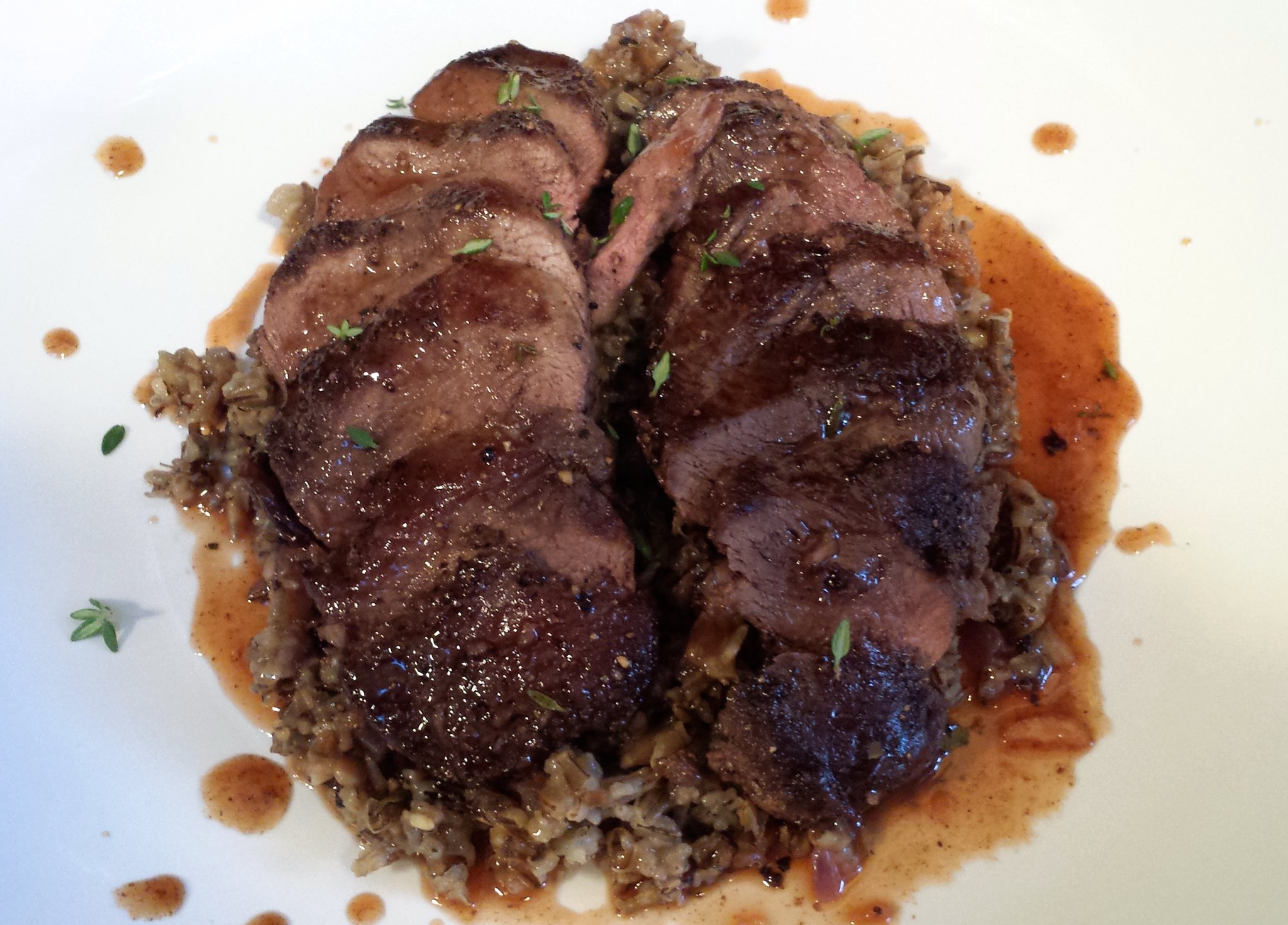
If I were forced to pick my favorite thing to eat, I would probably go with ducks. They’re one of the most versatile animals out there when it comes to cooking: they’re as good on the grill as they are in a stew, and they also adapt to every style of cooking out there. Duck is hugely popular in Chinese cuisine, French dishes, and all others in between. There are so many ways to prepare it, but for this post I will focus on just the breast.
My preferred method is pan-searing a breast simply seasoned with salt and pepper, and cooking it in butter. When cooked correctly, it has a texture and flavor similar to fine aged beef. This is one of the simplest ways to cook duck, but it can also be one of the hardest to perfect. Duck needs to be cooked rare to medium—at the most. Unfortunately, many people think it should be cooked well done, like a chicken breast. There’s a fine line to walk when cooking it. On one side of that line you have a tender, juicy piece of meat and on the other a dry, livery-tasting hockey puck. Knowing where that line falls takes time to figure out and depends on what kind of duck you are using.

You also have a choice to make: leave the skin on or take it off? The answer depends on the bird. Some species eat a lot of small fish, which influences the taste. If you remove the skin and fat from the breast, you can cut down on the any unpleasant flavors. That said, I like to leave the skin on with mallards, wood ducks, teal, pintails, and widgeons.

Cooking Duck Breast
When cooking a duck breast set it out on the counter for about a half hour before it goes into the pan. I season it liberally with salt and pepper and let it sit. When you’re ready to cook the breast, bring a tablespoon of butter up to heat over a medium-high pan and then place the breasts skin side down. Cook for 3-4 minutes for larger duck, and about 2-3 minutes for smaller ducks. Flip them over and give them the same time on the other side. That usually brings the duck to a decent medium rare. If you are going to eat the breasts as-is, then you’re all set. But if you would like to make a quick pan sauce to go with it, set the meat aside and tent it with aluminum foil.
Cranberry Pan Sauce
Using whatever fat is left in the pan, mince 2 cloves of garlic and sauté the garlic for about a minute until just soft. Then deglaze the pan with half a cup of stock. Duck stock is best, but chicken stock works as well. Scrape the pan with a wooden spoon to make sure you get all the little bits that are stuck to the pan. Add 2 tablespoons of red wine vinegar and 1 tablespoon of soy sauce. Stir in 1/3 cup of highbush cranberry jelly. If you don’t have highbush cranberry jelly, red currant jelly would work as would just about any jelly you want. Reduce that sauce down by half and stir in 1 tablespoon of butter. Stir that until combined and season to taste with salt and pepper as needed. Serve over the duck breast, and enjoy.
